Anxiety is NOT easy.
If you struggle with anxiety, then you know first-hand how consuming your anxious thoughts can be. You may be totally fine one moment, minding your own business, when your brain suddenly attacks with an onslaught of anxious thoughts racing around in wild patterns- which can be totally debilitating. Anxiety is often hard to explain to others, extremely frustrating, and the unpredictability can be especially rough.
So much of anxiety and trauma is related to our experiences of the past and our worries about the future.
If you have experienced a particularly traumatic event, you can be triggered by flashbacks, memories, and reminders of the trauma, which can cause intense feelings of anxiety. This can also look like fear and worry about that event happening again or dealing with an “anniversary” of when it happened.
So how do you escape the moment when anxiety strikes?
Grounding techniques are an incredible way to help reduce the impact of those messy icky anxious feelings in the moment.
Sometimes people seek therapy, hoping that these thoughts and feelings can completely go away. I know, I know. You KNOW they won’t completely go away, but you still secretly hope that they will. Accepting anxiety as part of life (and that it is even good for you) can help take the pressure off when you are coping with it.
Unfortunately, anxiety happens. Those messy feelings? Yeah, they’re gonna happen too. And as much as we want to get rid of them and feel “100% healed,” life just doesn’t work that way. While grounding isn’t a way to erase these memories or experiences, it can be a way to have them feel less intense in the moment, which will help you build resilience over time.
While grounding isn’t a cure for anxiety, it’s a useful technique to bust out when the hardest moments happen. Instead of drowning in your anxious thoughts, grounding can help bring you back to reality. Here’s how it works.
What Is Grounding?
Grounding is a technique that brings you into the present moment, right here and right now.
Anxiety has been described in countless ways. It’s fear of the unknown, it’s “freaking out,” it’s overthinking the past, it’s trying to predict the future. It’s messy as hell.
One way to think of anxiety is imagining it as time-travel:
I’m reliving something that went terribly and going over and over it in my head, or
I’m fretting about what will happen tomorrow, the day after that, and the day after that.
Grounding is really helpful because it allows you to hit pause on the time warp, and it brings you back to the present moment and the present environment.
What Are Some Grounding Methods?
There are a few different ways you can try grounding when you get stuck in an anxiety ambush. There is no right or wrong technique, so different ones may work for different people! Here are some of the ways you can use grounding to redirect your brain’s thoughts.
Cognitive Grounding:
If your mind is always racing, trying to do everything you can to calm it down may feel exhausting. Something like mindful meditation can feel especially hard to get your mind blank. Exercise also might not feel great because it just lets your mind zone out even more on the thing that’s bothering you.
Instead of trying to fight your mind’s natural tendency to fixate on something, just give it something better to focus on that’s not so anxiety-inducing. The brain is only capable of focusing on so many thoughts at once. Using cognitive grounding forces your brain to redirect from your anxiety.
It can look like this… Let’s say your thoughts are racing, your heart is beating fast, and you don’t know how to calm down. Instead of listing all the things that can go wrong during that presentation you have to give, start making a mental list of something super mundane.
Start listing state capitals. Make a mental list of every Denzel Washington movie. Name songs that start with the letter R. Hyperfocusing on this task will distract you from the stressful thoughts for long enough that your body can begin calming down. Before you know it, your anxiety will be at a 5 instead of at a 7.
Tactile Grounding:
If you find comfort in physical touch, tactile methods may be your best option. If getting deeper into your head sounds like a nightmare, tactile grounding can get you out of your head and focused on your body.
Tactile grounding can involve your five senses, so touching a soft blanket, drinking a soothing cup of peppermint tea, or splashing cold water on your face. Maybe this can look like petting your cuddly dog or running your fingers through your hair are ways you can use tactile grounding to feel calmer.
This will distract your brain and get it out of the super anxious loop it was running on. When you’re stuck in your brain, it can be easy to disassociate with the world right in front of you. So a reminder that you’re physically there can be soothing.
Visual Grounding:
When you feel like you’ve been super pulled away, especially in flashbacks or memories, this allows you to look around and focus on your present environment.
Start to note the things around you:
Make a mental list of all the green things you can see.
Describe the artwork on the wall to yourself in great detail.
Count the ceiling tiles in the room.
You’re not trying to write an essay, so it doesn’t have to be perfect. You’re helping your mind focus on the things around you. By acknowledging these things around you, you pull yourself back to reality.
You’re not back in that classroom that caused you so much anxiety. You’re not in a car headed to an appointment that is making you nervous. You’re in your present environment. Focusing on the physical things around you is another way to gently bring yourself back to your current reality instead of worrying about the past or the future.
And that’s the whole point of grounding; it’s a way to stop your anxious brain in its tracks and help you feel more grounded on the Earth. The method of grounding you choose comes down to preference.
If you’re an overthinker, you may worry that you aren’t doing it right. And It may take time for you to find the grounding technique that works best for you. Remember to be patient with yourself and open to trying new methods.
How to Get Started with Grounding
The next time anxious thoughts overwhelm you, you might want to consider grounding yourself. If you’re still trying to figure out which of the above methods works best for you, it can be easy to start by using one of the most popular and effective methods: the 5-4-3-2-1 technique. Note: you can modify this exercise if you don’t have ability to use all 5 senses.
Consider this a roll call of the five senses. Start by noting five things you can see. Next, find four things you can feel. Then, list three things you can hear. Note two things that you can smell. Finally, find one thing that you can taste, even if it’s just water.
By using the 5-4-3-2-1 technique, you stimulate all of your senses and pull yourself back to physical reality. If you have inhibited ability to use one of the senses, you can simply adjust the list to better fit your circumstances.
Find Support
It can be really hard to navigate life with anxiety, and it’s even harder when it strikes at inopportune times. Grounding is a useful tool for staying focused and not allowing anxiety to take full control. With the help of grounding, you can learn to better combat your anxiety in the moment. Over time, you will build more capacity to stay in the present.
Remember that while grounding is a great technique, it’s not a cure.
If anxiety is affecting your life, you may want to consider seeking the help of a therapist. Together with a trained professional, you can better understand the root of your anxiety and work to come up with even more solutions to combat it. You don’t have to suffer in silence. You may have anxiety, but anxiety doesn’t have you.
---------
Prospect Therapy is a queer + trans affirming therapy practice based in Long Beach, CA, with a focus on mental health for first-generation, immigrant, and bicultural communities. We continue to provide online therapy for a variety of mental wellness and relationship concerns to clients throughout the state of California. Learn more about how we bring lived experience to our work with LGBTQ+ folks of all ages in our communities by requesting a consultation below.

